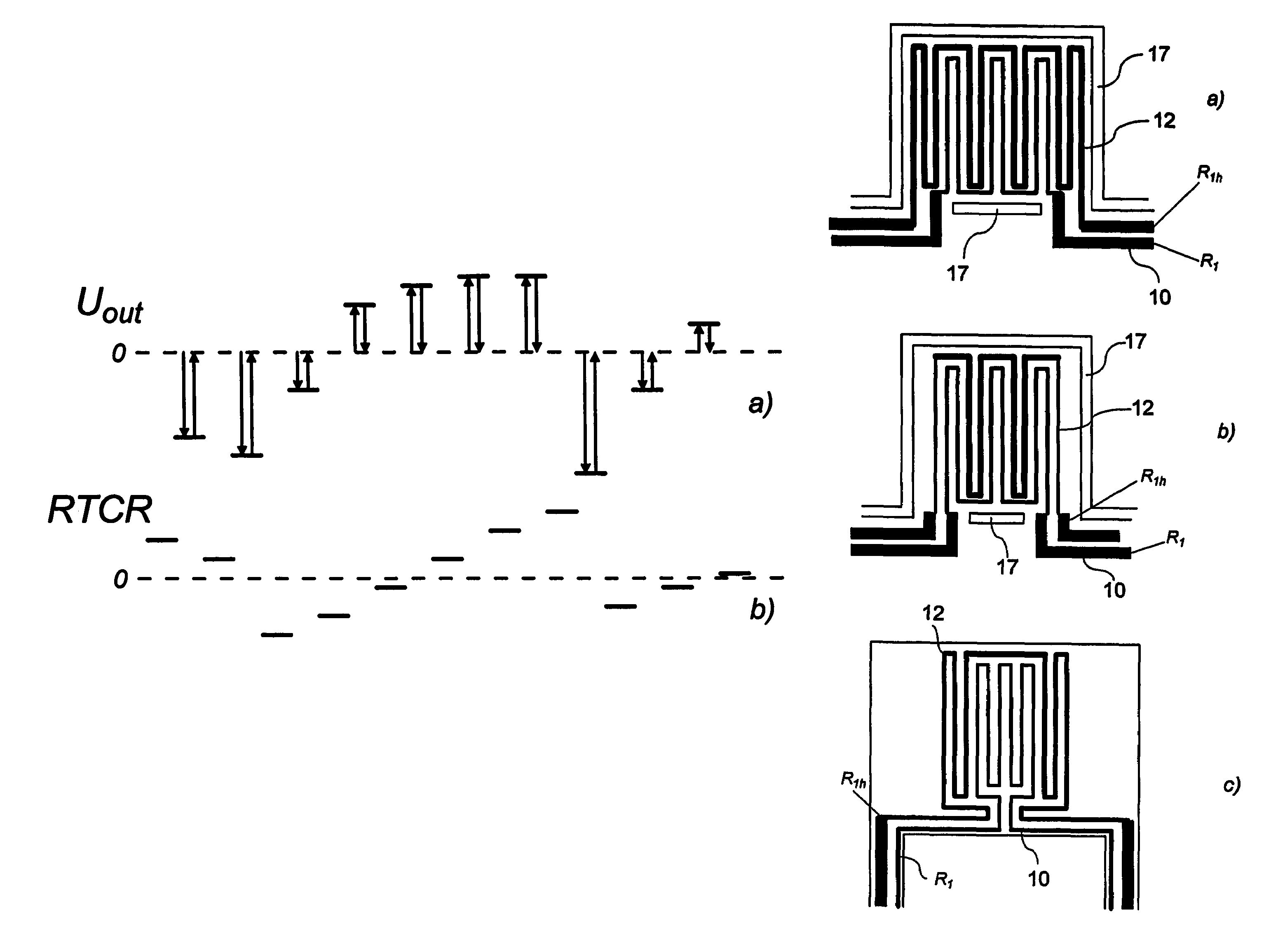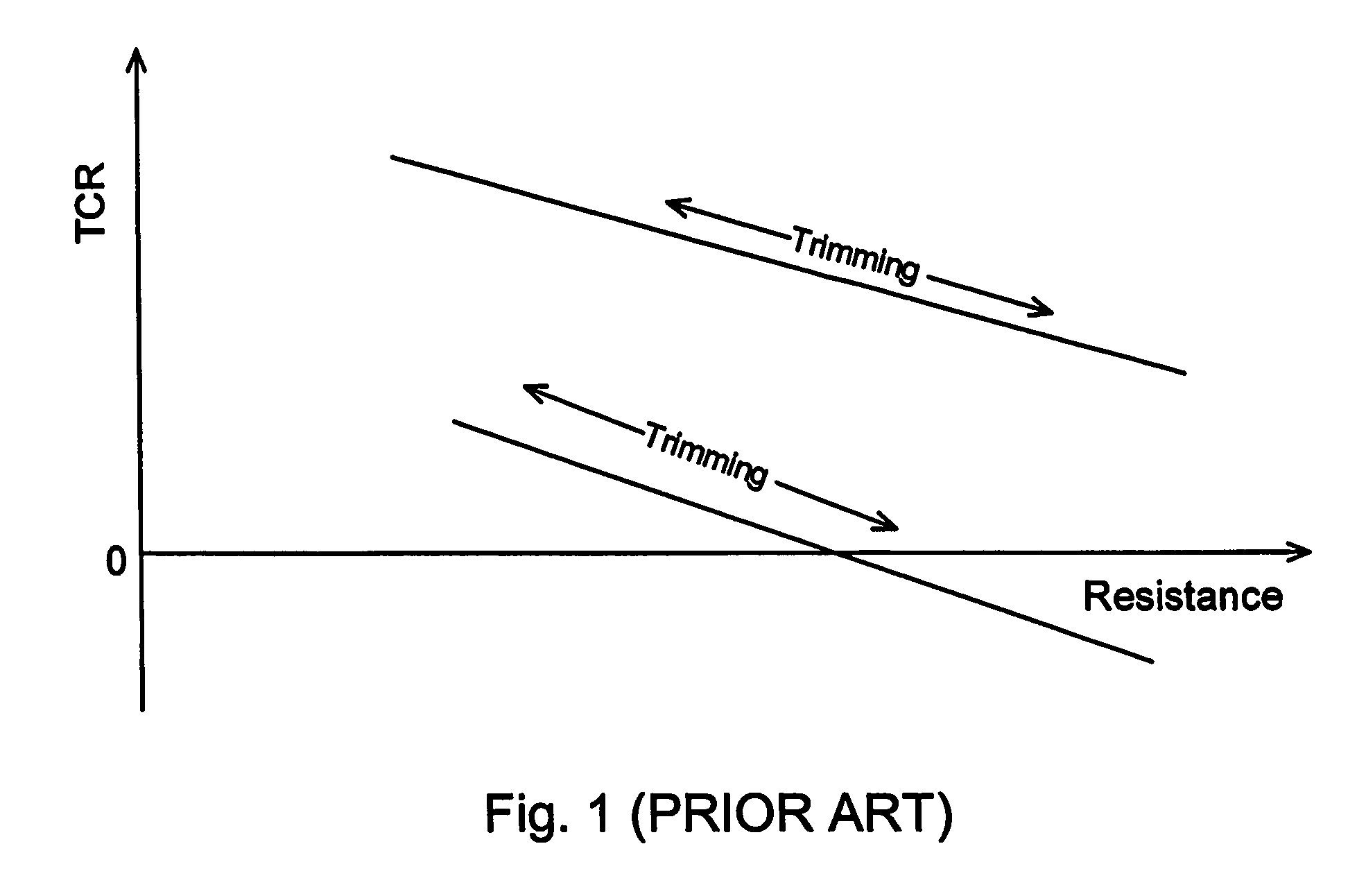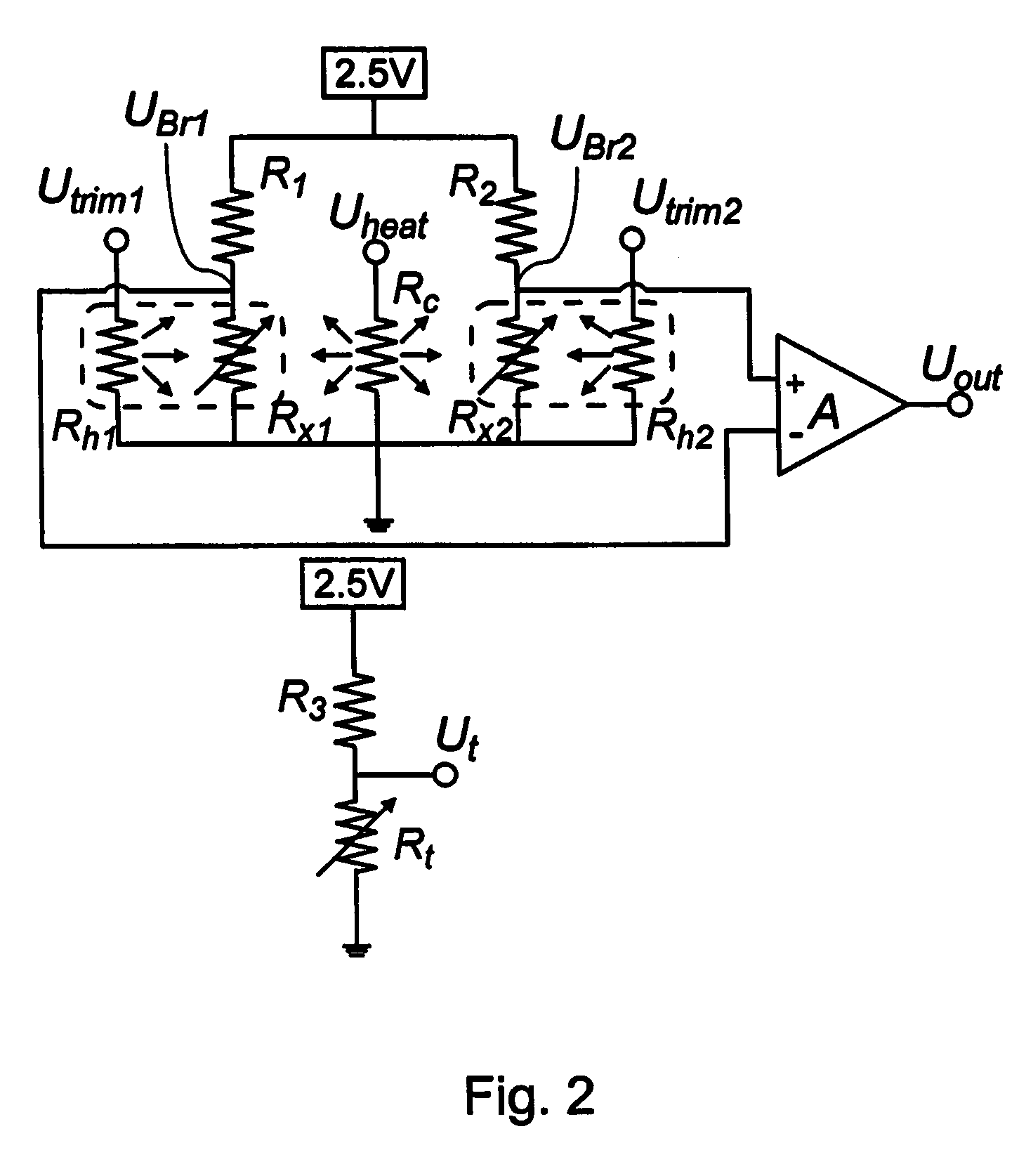Method for adjusting an output parameter of a circuit
a technology of applied in the direction of positive temperature coefficient thermistors, resistive material coatings, instruments, etc., can solve the problems of unavoidable statistical spread of device parameters, output voltage and temperature coefficient, and the dependence of output parameters on resistors, etc., to improve the trimming performance of analog electric circuits
- Summary
- Abstract
- Description
- Claims
- Application Information
AI Technical Summary
Benefits of technology
Problems solved by technology
Method used
Image
Examples
Embodiment Construction
[0052]Throughout the description, the term “output parameter” should be understood as meaning any parameter representing a characteristic of an output signal, such as amplitude, voltage, current, frequency, sensor sensitivity, offset, gain, temperature variation (linearity, non-linearity, or an actual value thereof), etc.
[0053]The term “temperature coefficient of resistance”, and its abbreviations “TCR”, “RTCR”, should be understood in general to include both linear and non-linear coefficients of temperature variation of resistance.
[0054]The term “active semiconductor device” should be understood to include diodes, transistors, metal-oxide-semiconductor devices, field-effect transistors, and any other non-passive electronic component made in a semiconductor wafer or chip.
[0055]While the prior art demonstrates that the TCR changes when one trims the resistance, it does not show how to trim the TCR while maintaining a constant resistance value.
[0056]This approach to trim the TCR of th...
PUM
| Property | Measurement | Unit |
|---|---|---|
| base-emitter voltage | aaaaa | aaaaa |
| circuit voltage | aaaaa | aaaaa |
| circuit voltage | aaaaa | aaaaa |
Abstract
Description
Claims
Application Information
 Login to View More
Login to View More - R&D
- Intellectual Property
- Life Sciences
- Materials
- Tech Scout
- Unparalleled Data Quality
- Higher Quality Content
- 60% Fewer Hallucinations
Browse by: Latest US Patents, China's latest patents, Technical Efficacy Thesaurus, Application Domain, Technology Topic, Popular Technical Reports.
© 2025 PatSnap. All rights reserved.Legal|Privacy policy|Modern Slavery Act Transparency Statement|Sitemap|About US| Contact US: help@patsnap.com



